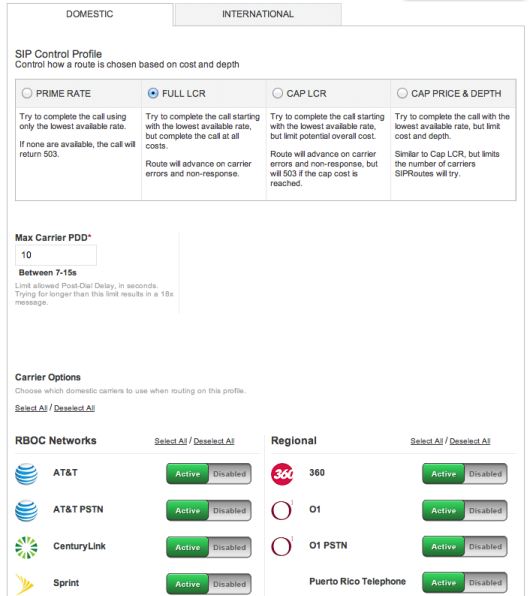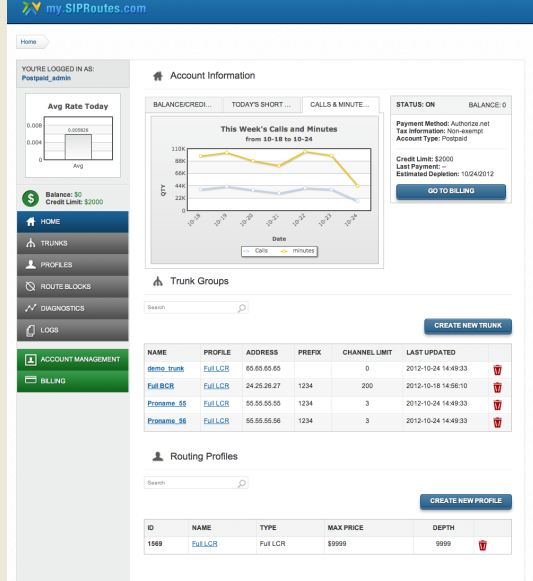At TMC’s recently concluded ITEXPO (News - Alert) Austin 2012, I got to speak with Michael Tindall, cofounder, president and CTO at Durham, NC-based SIPRoutes, a leading provider of cloud-based voice applications for enterprises and telecom service providers. As the headline suggests, the subject was getting caught up on what some might consider a mundane part of the entire communications ecosystem, but what in reality to enterprises of all sizes and the service providers who want their business, is critically important, is least-cost routing (LCR).
After all, it should be remembered that over 80 percent of most organizations’ total IT budgets goes to the support of legacy capabilities and a huge slug of that, right up there with the cost of labor, is networking services.
And, like it or not, voice services are still an enormous part of those.
In short, managing the cost of voice services, along with making sure call quality and network performance are up to snuff to mitigate irate end users (particularly C-levels) complaining about dropped or “bad quality” calls, is “mission critical.” IT managers with the responsibility for watching the costs and quality of voice communications do not have an easy job. They are highly visible “hands to shake.”
It is for this reason that as the world becomes IP-centric and VoIP prevalent, having the right tools to assure scarce dollars are spent wisely and vendors can be held accountable is crucial. In other words, don’t forget to make sure you have great LCR.
The magic of the cloud, visualization and control
As Tindall explained, “Switching calls onto less expensive providers is not new. What is new is the ability to do so automatically based on user-defined, easily managed preferences, with monitoring and analytic capabilities to assure cost containment is optimized based on the users’ parameters, and customers are getting want they need and what they pay for.”
What SIPRoutes provides is a powerful digital dashboard to give those responsible for monitoring and managing IP voice communications an arsenal of capabilities to be proactive as well as reactive.
It is the magic of the cloud that enables this new level of risk management on what is and will remain a substantial expense item for enterprises of any size. The industry likes to call such capabilities under its old name, least-cost routing.
I think you’ll agree on two points: a) this is clearly not your father’s least-cost routing. And b) a better name for such functionality might be “best-cost routing.”
What SIPRoutes is offering is a true window on the VoIP world, but with the controls to do a lot more than open and shut to avoid a draft. As a cloud-based carriers’ carrier, they offer space in effect, the best of the hardware guys who make least cost routing and enhancements over other least cost routing service providers using a Software-as- a-Service (SaaS (News  - Alert)) model. That is based on four strategic models users can choose from:
- Alert)) model. That is based on four strategic models users can choose from:
- Prime Rate: Try to complete the call using only the lowest available rate. If none are available, the call will return 503.
- FULL LCR: Try to complete the call starting with the lowest available rate, but complete the call at all costs by route advancing through each carrier selected in your profile. Route will advance on carrier errors and non-response.
- CAP LCR: Allows you to set a maximum rate per minute, if the call costs more than that rate, SIPRoutes will 503 the call.
- CAP Price and Depth: Allows you to set the maximum rate per minute and the maximum number of carriers to try. If either are exceeded, SIPRoutes will 503 the call.
What this looks like to the administrator can be seen in the graphic below.

Image via SIPRoutes
You get to select which carriers you would like to do business with, and based on profiles you define, you then get quality information in significant detail as to who they are performing and not incidentally how you are as well.
At a high level, this is what an account would look like.

Image via SIPRoutes
And while it’s impossible to produce a screen shot that does justice to the diagnostics and billing granularity available, suffice it to say that a user can look at as much call detail recording information as they need for either a single problematic call, as well as overall vendor performance.
This is an example of “set it and forget it.” The goal is the establishment of a management “E”vironment that fits the needs and pocketbooks of virtually any organization. As Tindall noted, the benefits are substantial:
- One bill from SIPRoutes
- One point of contact
- One hand to shake
“We tried to make this as simple as humanely possible. There is no CapEx and no OpEx. You only pay for what you use,” he explained. Another nice feature he noted was that, “When we get better pricing we push it to you.”
I liked how we ended our conversation. Tindall said, “There is nothing fancy about switching minutes. But, it is hard work ensuring customers know what is going on and have their services optimized according to their preferences…We automatically can route to the preferred alternative based on profiles in milliseconds, and provide a level of detail and accountability that is unprecedented… We think we have unique capabilities and are trying to disrupt the market.”
I happen to agree that the level of functionality provided, including the service options raises least-cost routing to another level. SIPRoutes has made least-cost routing more like best-cost routing, and that is something to talk about.
Edited by Braden Becker
